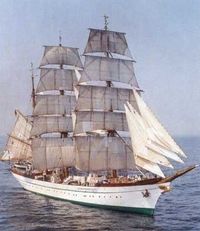Clean Drinking Water
Life may be an Adventure,
but your drinking water shouldn't be one!
Water is one of the most interesting elements in nature. It has properties without which life on earth would not be possible.
Water is the source of all life and human civilization.
Water is the most important basic staple food and is also used in the production of almost all foods. It serves the body to accomplish vital tasks.
It works as a solvent and as transportation, helps with the excretion of metabolic products and salts through the kidneys and regulates body temperature.
Very important for Europe,
Multi-resistant germs are increasingly becoming a very big problem !
The Katadyn filter system retains particles larger than 0.2µm, including the multi-resistant germs now found in lakes and rivers in Europe. In addition, viruses that often adhere to particles larger than 0.2µm are also retained.
However, an essential point for this is the correct handling of the filter.
Water is the main component of our body.
We consist of 70% water, our head even contains 80-85% water.
In order to maintain and clean this household, it is necessary to drink enough.
The minimum an adult should drink daily is 1.5 litres of water. Minimum therefore since it is recommended to drink at least 2 to 3 liters of pure water.
The rule of thumb for the right amount of water is:
That may sound a lot now, admittedly, for a "water-drinking beginner" it certainly is.
But you can learn to drink properly, and after a while it's the most normal thing in the world, and that's the way it should be...
Regular drinking is extremely necessary, especially when travelling and especially during physical exertion. It makes no sense to drink the recommended 2 to 3 litres per day at once.
Our intestines can only absorb approx. 0.2 litres of water per quarter of an hour.
So if we drink too much water too quickly, most of it would be excreted by the kidneys and therefore no longer usable by the body.
Water consumption is enormous due to heat and dry air, especially when cycling or paddling ...
Did you know that 80 percent of all travel sicknesses are caused by contaminated drinking water, which affects every second long-traveller.
Or how many faecal bacteria can the supposedly clear water of a mountain stream contain?
It is therefore essential to give top priority to water and of course drinking water in particular.
It is good to know that in principle clean drinking water can be treated from any water depending on how polluted it is with more or less great effort.
Thanks to technical developments, there are now good drinking water filters on the market that can be used on the move, which reliably guarantee clean drinking water and should not be lacking in any luggage when travelling.
Everyone can reduce the risks he is exposed to from contaminated drinking water and thus endanger his health with reasonable precautions and some common sense, so that he can enjoy his trip without worries.
The different methods of water treatment are:
The boiling:
Microorganisms can be eliminated in this way.
Boiling is time-consuming and requires the presence of energy.
Simply put the classic pot on the flame, let the water boil for at least 2 minutes and the drinking water is ready. However, it must be noted that the boiling point of the water decreases with increasing height. This means that water must be boiled for longer to ensure that germs are reliably killed....
Advantages
- Without chemistry
- No additional equipment necessary
- Cost-effective
- Very reliable with adequate cooking time
Drawbacks
- Fuel necessary like wood, petrol, gas, etc.
- The boiling point of the water decreases with increasing height - the cooking time and thus the fuel consumption increase on the other hand.
- Taste and smell of the water are not improved in any way...
- Time-consuming treatment through boiling and cooling
- Rapid re-germination of the water
- Chemical substances remain in the water...
Disinfection with chemicals:
The microorganisms are killed with the help of chlorine, iodine, ozone or silver. Disinfection makes only sense if the water is optically clear, as suspended particles in the water bind the disinfectants and thus limit their effectiveness.
With this method, pathogens are safely killed in water by adding drops or small tablets in a chemical way. However, the chemical (chlorine,iodine ...) used determines whether germs in the water are effectively killed or only prevented from multiplying (silver ions).
Advantages
- Extremely light
- Low packing size
- Depending on chemical hardly any recontamination of the water
- Permanent preservation
- Disinfection of large quantities of water at once possible
Drawbacks
- Taste and smell of the water can be affected
- High cost per sterilized litre of water
- Partly long effective times > 30 minutes
- Chemical substances remain in the water
The filtration:
Bacteria and protozoa (these are the small animal protozoa) are held back by the use of microfilters. The filter media used are ceramic, glass fibre and activated carbon. The pores of the filter should not be larger than 0.3 microns.
Meanwhile some filters have shrunk down to straw size!
Depending on the filter material used, bacteria, viruses and protozoa are more or less completely filtered out of the water.
Some water filters also have activated carbon elements to neutralize the taste or improve the filtered water.
For me these filters are the OPTIMUM!
Advantages
- Very reliable disinfection
- No fuel required
- Durable several 1000-100000 litres filter capacity depending on filter used and degree of contamination
- With additional use of an activated carbon filter Taste and odour improvement
- Even filters chemicals such as fertilizers, pesticides, etc. in some cases.
- Relatively fast filter method for 1-2 persons depending on the filter used !
- Water can be drunk immediately
Drawbacks
- Additional weight and packing volume
- High purchase price, which however becomes very fast cheap because of the high filter performance....
- Filter elements can clog up and make frequent cleaning necessary, but with Katadyn it doesn't matter at all it goes quite quickly!
- Depending on the pore size, additional chemical disinfection may be necessary. I have never had to do this with my Katadyn!
- Pumping can be quite cumbersome, but only with the small hand filter...
In swimming pools and drinking water reservoirs, disinfection has been working reliably with UV light for a long time, and it also disinfects drinking water on a much smaller scale. In this process, all germs in the water are killed by means of UV light.
With small, battery-operated devices you always have your waterworks on the move, so to speak, but I don't rely on such devices! I prefer to play it safe and use real filters....
Advantages
- no chemistry necessary
- light and small
- no risk of overdose or underdose
- No cleaning or drying necessary after use
- Relatively low purchase price
- Rapid disinfection
Drawbacks
- Floating particles remain in the water
- No improvement in taste and smell
- High power consumption even at low temperatures
- No filtering of chemical substances
- Only works safely with clear water...
- Quite high costs per filtered litre of water by using electricity/batteries
While boiling and chemical processes destroy the germs but leave them in the water, microfilters mechanically retain them on the filter surface.
Ceramic filters have the advantage that they can be cleaned and recycled several times, while glass fibre filters, thanks to their flexibility, can be folded up tightly, resulting in an extremely large surface area in a very small space, which means that these filters have a high volume of dirt and there fore can only used a few times. |
In Alaska and Canada
the pathogen Giardia lamblia,
better known as
Beaver Fever,
is present in almost all waters!
I strongly advise everyone to filter the water before use. Beaver Fever causes very painful stomach cramps and diarrhoea partly with simultaneous vomiting!
Also we as human can spread Giardia lamblia further through our excretions !
I had been infected with Beaver Fever on one of my first trips to Alaska and despite medication I had to fight diarrhoea and vomiting almost daily for the next 2 months !
SO MY URGENT ADVICE:
Even if the water looks so clean, please filter or disinfect with tablets.
There are all kinds of drops and powders to disinfect water, but I prefer the filter. I think we all take in enough chemicals through our food, so we don't need to mix our water with such things in nature ! There are already some very good powders with silver as bacteria killer on the market, but a filter is clearly the better choice! |
However, to preserve water for a long time, the Katadyn Micropur tablets and powders are the best!
Katadyn Expedition KFT Water filter
Weight (g):5200
Service life (litres):100,000
Capacity (litres):4l/min
The Katadyn Expedition water filter is one of the most expensive filters on the market at 1200 euros, but with a water filter performance of over 4 litres per minute it is also one of the fastest!
The small hand water filters are absolute toys where the filtration will take foreverand just good when you have to watch the weight!
Thanks to its almost indestructible construction, the Expedition Wassefilter proves itself very well on my expeditions. I have been using my filter for many, many years !
One filter cartridge has a capacity of almost 100,000 litres ...
Spare parts: |
The Katadyn Expedition is extremely robustly built, there is no plastic on this filter ! All important parts are made of metal and can be exchanged, although at an absolutely exorbitant spare part price...
Another advice:
Water from fast-flowing streams always tastes better than water from stagnant waters!
Lakes always taste a bit musty....
I have filtered my water from thousands of lakes and rivers in the last 30 years...
My conclusion:
While some people want to be ultra-light on the road and have to take sterilisation tablets with them for weight reasons, others attach importance to really tasteless and optically clean water.
In the latter case, a water filter is certainly the much better choice.
The egg-laying woolly milk pig does not really exist for water disinfection on tours.
Rather the individual advantages and disadvantages must be weighed against each other and/or the different methods must be combined together!
Water should be sterilized when traveling in any case.
A diarrhoea with nausea can turn any tour into a torture tour and spoil the trip very, very much...
I clearly recommend the use of a water filter!
Continue with:
The Bear Topic !
Only those who risk going too far, will discover how far they can go!
Expedition in USA, Alaska & Canada, Scandinavia with folding boat, motorboat, catamaran, motorcycle, off-road vehicle, bicycle ...





